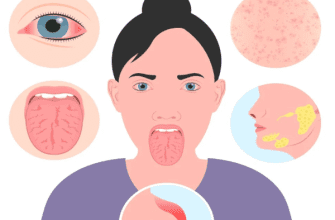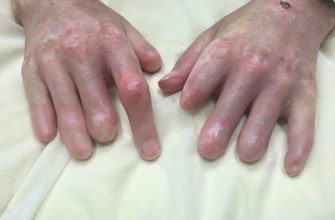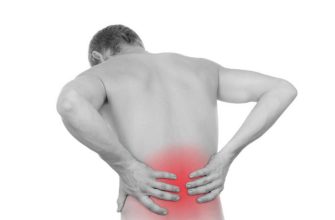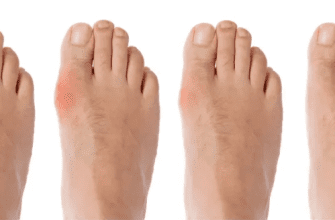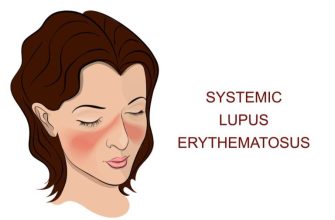What is an Esophageal Diverticulum?
An esophageal diverticulum (plural: diverticula) is an outpouching, or sac, that forms in the wall of the esophagus. Think of it as a pouch protruding from the esophageal lining. It can trap food and liquid, leading to a variety of symptoms. They are relatively rare.
Types
Diverticula are classified by their location and how they form:
- Zenker’s Diverticulum (Pharyngoesophageal Diverticulum):
- Location: The most common type. It occurs in the back of the throat, at the junction of the pharynx and esophagus (the cricopharyngeus muscle).
- Cause: A pulsion diverticulum. It’s caused by high pressure inside the esophagus from a muscle that doesn’t relax properly (dysphagia), pushing the lining through a weak point in the muscle wall.
- Traction Diverticulum:
- Location: Typically in the mid-esophagus (near the chest).
- Cause: Result of external pulling (traction) from inflammation or scar tissue in the chest cavity, often from a chronic condition like tuberculosis or histoplasmosis that causes inflamed lymph nodes to adhere to the esophagus. This is a true diverticulum, involving all layers of the esophageal wall.
- Epiphrenic Diverticulum:
- Location: Just above the diaphragm, near the lower esophageal sphincter.
- Cause: A pulsion diverticulum, similar to Zenker’s. It is associated with an underlying esophageal motility disorder like achalasia or diffuse esophageal spasm, where high pressure causes the lining to herniate.
Symptoms
Many small diverticula cause no symptoms. When symptoms occur (often as the diverticulum enlarges), they include:
- Dysphagia: Difficulty swallowing, feeling like food is “stuck.”
- Regurgitation: Undigested food, often many hours after eating. This can happen unexpectedly, even when bending over, and can lead to aspiration (food entering the windpipe).
- Bad Breath (Halitosis): From food rotting in the pouch.
- Globus Sensation: Feeling of a lump in the throat.
- Coughing and Throat Clearing: Especially at night.
- Weight Loss and Malnutrition: In severe cases, due to difficulty eating.
- Chest Pain: Less common.
Warning Signs & When to See a Doctor
You should see a doctor (start with your primary care physician or a gastroenterologist) if you experience persistent:
- Difficulty swallowing or pain upon swallowing.
- Unexplained regurgitation of undigested food.
- Chronic cough, especially related to eating.
- Unintentional weight loss.
While not always an immediate emergency, aspiration (inhaling food into your lungs) can lead to serious pneumonia and requires prompt medical attention.
Diagnosis
Diagnosis typically involves visualizing the diverticulum and assessing esophageal function.
- Barium Esophagogram (Barium Swallow): This is the gold standard test. You drink a chalky liquid that coats the esophagus, and X-rays are taken. This clearly outlines the pouch, showing its size, location, and how well it empties.
- Upper Endoscopy (EGD): A scope with a camera is used to look directly at the esophagus. This is important to rule out other causes like cancer but must be performed with extreme caution to avoid perforating the diverticulum.
- Esophageal Manometry: Measures the pressure and coordination of muscle contractions in the esophagus. This is crucial to identify an underlying motility disorder (like achalasia) that may be causing an epiphrenic diverticulum and needs to be addressed during surgery.
Treatment
- Asymptomatic Diverticula: No treatment is needed; often just monitored.
- Symptomatic Diverticula: Treatment is surgical repair, as symptoms do not improve on their own and tend to worsen over time.
Types of Surgery
The goal of surgery is to remove the pouch and correct the underlying muscle problem.
- Diverticulectomy: Surgical removal of the diverticulum itself.
- Diverticulopexy: The pouch is not removed but is tacked up (suspended) so it can no longer trap food and drain properly.
- Myotomy: This is the most critical part of the operation. The surgeon cuts the tight muscle (e.g., the cricopharyngeus muscle for Zenker’s, the lower esophageal sphincter for epiphrenic) that caused the high pressure and created the diverticulum. This prevents recurrence.
Surgical Approaches:
- Open Approach: Traditionally done through an incision in the neck (for Zenker’s) or the chest/abdomen (for epiphrenic).
- Endoscopic/Transoral Approach: For Zenker’s diverticulum, a specialized procedure called Per-Oral Endoscopic Myotomy with Stapling (POEM/STESD or Z-POEM) is increasingly common. A scope is passed through the mouth, and the shared wall between the diverticulum and esophagus is cut with an endoscopic stapler. This is minimally invasive, has no external scars, and typically leads to a faster recovery.
Prognosis
The prognosis after surgical repair is excellent.
- Success rates for relieving symptoms are over 90-95% for Zenker’s diverticulum.
- Complications, such as leakage from the repair site (fistula) or recurrence of the diverticulum, are possible but uncommon, especially in experienced hands.
- Addressing the underlying motility disorder with a myotomy is key to preventing recurrence.
Prevention
There is no known way to prevent the formation of esophageal diverticula, as they are often caused by inherent muscle weakness or related to other inflammatory conditions.


